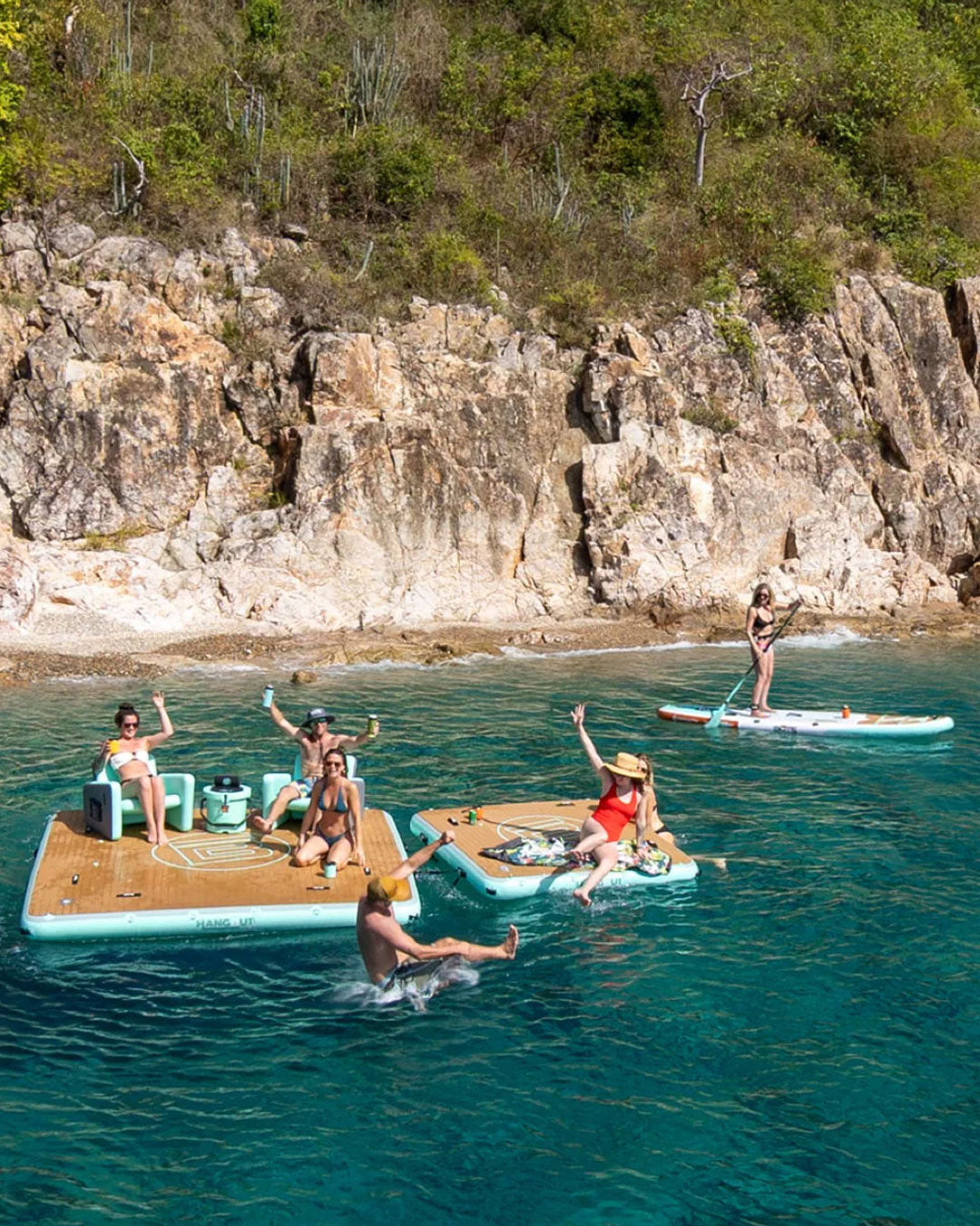SUP PUPS 101: Introducing Your Dog to Paddle Boarding
Let's be honest, paddling alone is boring. But sometimes it’s hard to find a friend to join you on your expedition. So why not man's best friend who is always available?
The first question to ask yourself is, “Does my dog like the water?” If the answer is no, maybe you should rethink this plan, as paddling with them will most likely not be enjoyable. A lot of dogs can learn to like water (beyond baths, of course) after a few opportunities to swim on their own and get over any fears, but that would be a key first step.
However, if your pup is a true water dog, turning him or her into a SUP pup won’t be hard with some basic tips.
1. Where to Begin
The first step would be to choose the right paddle board. It's important to keep four things in mind when choosing a paddle board for you and your dog: stability, capacity, traction, and construction.
Stability: A good rule of thumb when searching for a stable board is to look at the board’s width. In most cases, the wider the board, the more stable it will be. Higher stability boards are great for larger dogs who tend to shift their weight more and throw the paddler off balance.
Capacity: Calculate your weight, plus your dog's weight to decide which board capacity is right for you. Also consider any extra gear you might bring along such as a cooler.

The Rackham Gatorshell is one of BOTE's most stable and high capacity paddle boards.

The Flood Full Trax has a full-length deck pad from the nose to the tail of the board.
Traction: Consider getting a paddle board with a full deck pad so it’s easy for your dog to grip when there are waves. BOTE’s Full Trax paddle boards feature a deck pad that runs the full length of the board and is a great option for furry friends.
Construction: Most people would be surprised to find that inflatable paddle boards are the most durable option for your pup. Thanks to the military-grade PVC our inflatables can withstand your dog nails and are very comfortable on the dog’s paws.
Before you add a second passenger you’ll want to first master the basics: standing up, paddling and turning on your paddle board. Even then, you want to be sure your dog is ready too. Your pup should know basic commands like “sit” and “stay” to make your experience together safe and fun.
2. What You Need
PFD: Even if your dog is a good swimmer, it is always a good idea to get your dog a life jacket. Be sure to try it on with them at home to make sure they are comfortable and it fits snugly. A PFD will ensure that your dog is safe should he fall or jump in the water and hit his head. A life jacket with a handle on top is recommended for helping lift him back onto the board.
Dry Bag: Depending on your destination and the length of your paddle trip, you may need a few additional things. A few items to consider packing in your Highwater dry pack are water, collapsible water bowl, dog waste bags and treats. Of course, don’t forget your pup!

3. Getting Your Dog Comfortable on a Paddle Board
Ok, so you have all the gear. You can paddle. Your dog likes water and his new life jacket. What next?
Get Them Comfortable: Pull your board out in the backyard or living room and let your dog sniff it, look at it and explore it on its own terms. When he seems ready, put a treat on the board and encourage him to jump up himself. Have your dog sit and jump down. Repeat this till he seems comfortable. It is important to make sure not to force your dog on and off the board. Take it slow and make it fun for both you and him.
Do a Dry Run: Once your dog seems comfortable hopping on the board, stand where you would normally stand when paddling. Have your dog sit where you would like him to if you were on the water. If he sits and stays, give him a treat. Practice paddling, rocking, hopping. Your dog will probably jump off, but this is a good opportunity to test just how comfortable he is. Have him jump back on and keep practicing.

The Rackham Aero's recessed deck is comfortable and dry for extra riders.

The HD Aero's military-grade PVC is tough against dog nails.
4. Your First Paddle
On the day of your first paddle, be sure your dog’s nails are trimmed. By keeping claws short and dull you will minimize the chance of your board getting scratched or your deck pad torn.
When you get to your launch point, take your dog and the board close to the water. Practice the same training steps with treats to be sure your dog is responding the same way in a different environment.
When your dog seems comfortable and confident, give it a shot! Keep the first paddle short and keep the treats coming. If it doesn’t go as planned, learn from your mistakes and try again another day. Practice makes perfect.
















